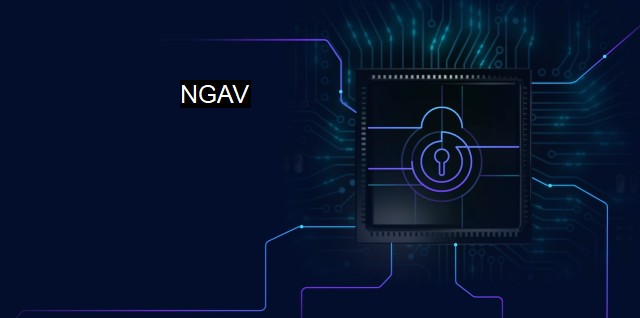What is NGAV?
Next-Generation Antivirus: Bridging the Gap Between Conventional Antivirus and Advanced Malware Analysis and Protection for Effective Endpoint Security
Next-Generation Anti-Virus (NGAV) represents a new paradigm in cybersecurity focusing on advanced threats. This innovative approach extends far beyond traditional antivirus (AV) capabilities, providing comprehensive protection against a broader range of security threats. In an era where cyber threats are multiplying and increasing in sophistication, the importance of robust, sophisticated, and comprehensive security solutions like NGAV cannot be overstated.Traditional antivirus software came into existence in the late 1980s, at a time when cyber threats were limited and simplistic in nature. Traditional AV works primarily using signature-based detection, where known malware signatures are identified and removed. But with modern cyber threats rapidly evolving and increasing in diversity, relying solely on traditional signature-based detection is proving insufficient. Cybercriminals now employ advanced techniques and tactics, such as polymorphic malware, zero-day attacks, and fileless malware that do not match any known signatures.
In response to these threats, cybersecurity underwent a sea-change, leading to the arrival of Next-Generation Anti-Virus, or NGAV. Unlike traditional AV, NGAV does not rely solely on signatures. Instead, it uses artificial intelligence (AI) and machine learning (ML) technologies to proactively detect, analyze and mitigate threats based on algorithms built from vast data sets of threat intelligence.
NGAV employs a multi-layered security approach, fusing several complementary detection methods and preventative actions such as application control, exploit prevention, and behavioural analysis. This intricate combination involves using threat intelligence, creating a holistic overview of each file, and then utilizing advanced analytical techniques to detect anomalies or irregular behaviours, thereby predicting and stopping potential threats even before they occur.
NGAV tools are able to predict threats by continuously learning from past encounters, demonstrating threat hunting capabilities and pre-execution protection. Threat hunting is a process where human analysts, powered by AI and ML tools, proactively search through networks and datasets to identify threats that have breached the system but yet to trigger a response. While pre-execution protection prevents attacks before they can even initiate, i.e., during the recon or weaponization stage of the kill chain of malicious actors.
Another breakthrough in NGAV is its ability to offer Endpoint Protection Platforms (EPP) and Endpoint Detection and Response (EDR) functionalities. EPP is the first line of defense and carries out primary tasks such as firewall, data encryption, or intrusion detection system, for protecting endpoints. EDR which works in tandem with EPP not only blocks cyber-attacks but also collects data from endpoints and initiates responses like alerts and reports to prevent network access by malware.
What makes NGAV stand out is the direct involvement and utilisation of cloud computing. The terabytes of data required for predictive modeling and threat intelligence, gathered and analysed in real-time, is stored in the cloud. Cloud computing not only allows for scalable storage space but also ensures constant updates and threat detection without slowing down systems, which is fundamental for real-time protection.
Despite advances in NGAV technology, the cybersecurity landscape is continually evolving. As new threats emerge and old threats morph into more challenging forms, businesses must stay updated on the latest threats. Industry professionals must ensure necessary upgrades to existing security protocols to match the band of threats they might face.
Next-Generation Anti-Virus presents a novel, high-tech, and comprehensive approach to cybersecurity. It represents an evolution from reactive detection to proactive security. By merging multiple techniques like AI and ML for behavioral analysis, layered security, threat hunting capabilities, pre-execution protection, and incorporating EDR and EPP functionalities - NGAV provides advanced, continuous, and real-time protection against modern and ever-evolving cyber threats. While its consumption of cloud computing makes it scalable and adaptable to handle vast amounts of data, ensuring system speed is not hindered. With rising global cyber threats, NGAV is becoming not just an option, but a necessity for robust cybersecurity.

NGAV FAQs
What is ngav?
Ngav stands for next-generation antivirus, which is an advanced cybersecurity technology that is designed to protect against sophisticated cyber threats.How does ngav differ from traditional antivirus?
Ngav employs advanced technologies such as machine learning, behavioral analysis, and artificial intelligence to detect and prevent new and unknown threats, whereas traditional antivirus relies on signature-based detection to identify known threats.Is ngav effective against all types of cyber threats?
While ngav is quite effective at detecting and blocking most types of cyber threats, no antivirus solution can guarantee 100% protection against all types of attacks. It's important to complement ngav with other cybersecurity measures such as firewalls, intrusion detection systems, and employee training to minimize the risk of cyber attacks.What are the benefits of using ngav?
The benefits of using ngav include enhanced protection against sophisticated malware attacks, improved threat detection and response times, reduced false positives, and better visibility into your organization's security posture. Ngav can help you stay ahead of the evolving threat landscape and protect your critical business assets.Related Topics
Malware detection Behavioral analysis Endpoint security Cyber threat hunting Intrusion detection
| | A | | | B | | | C | | | D | | | E | | | F | | | G | | | H | | | I | | | J | | | K | | | L | | | M | |
| | N | | | O | | | P | | | Q | | | R | | | S | | | T | | | U | | | V | | | W | | | X | | | Y | | | Z | |
| | 1 | | | 2 | | | 3 | | | 4 | | | 7 | | | 8 | | |||||||